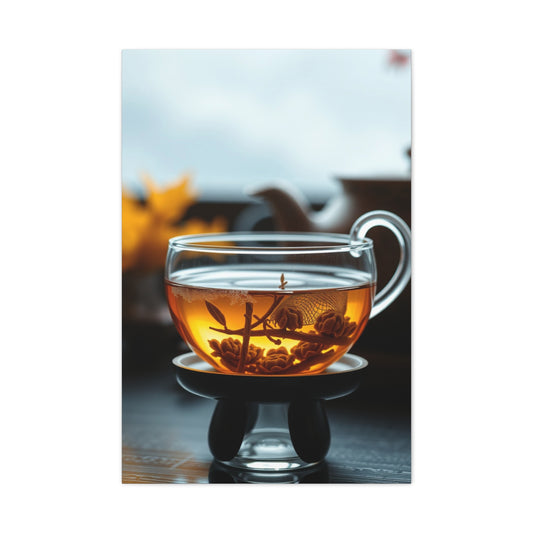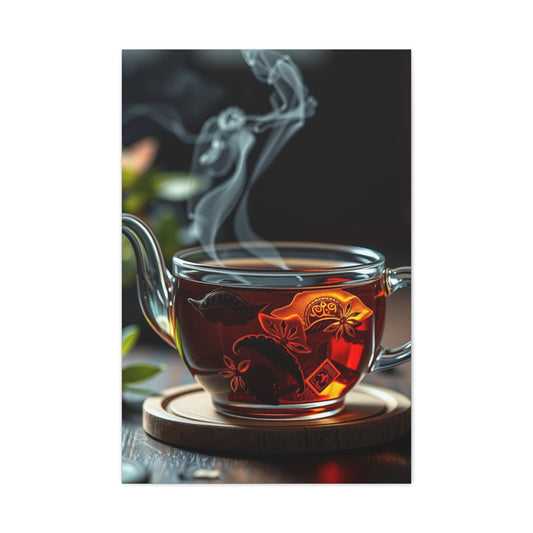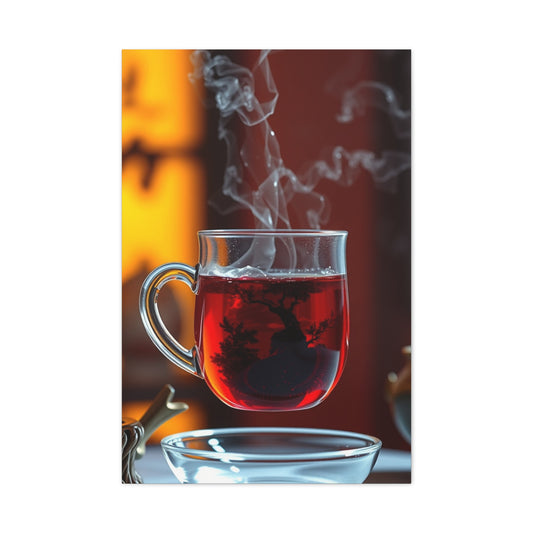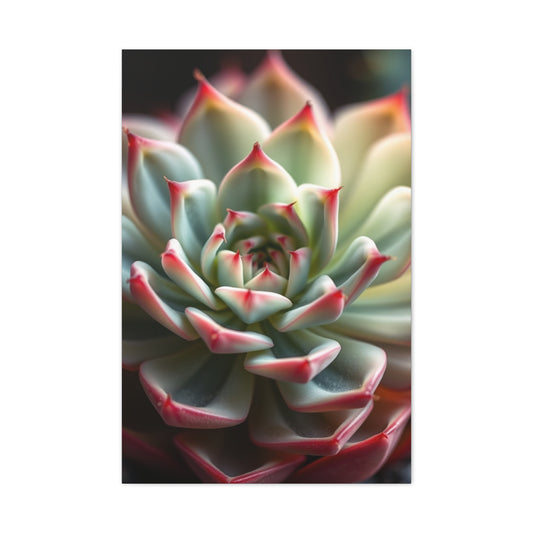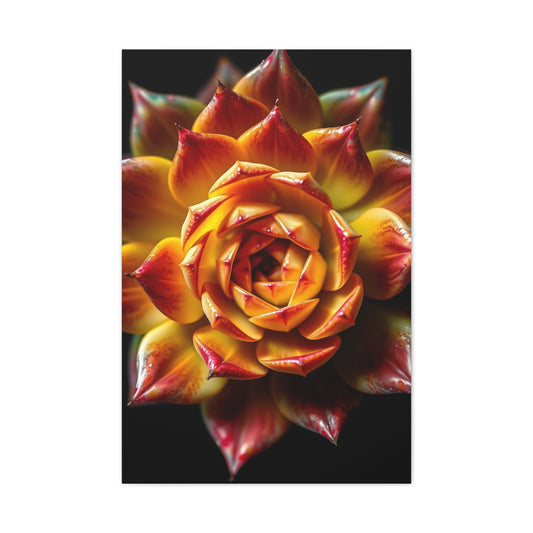Farmhouse style has long been a beloved interior design trend that seamlessly combines rustic charm with modern simplicity. It’s a design ethos that feels warm, welcoming, and timeless, making it an ideal choice for creating a cozy and inviting home. Whether you are a newcomer to farmhouse décor or you’ve been drawn to its easy elegance for years, this style offers something for everyone. From vintage-inspired furniture to clean lines and soft textures, farmhouse style is all about blending the old with the new.
While farmhouse décor has roots in rural America, it has evolved to fit contemporary tastes, offering both nostalgia and modernity in one package. For those unfamiliar with the style, it may seem like a design challenge, but it’s easier than you might think to transform your living space into a farmhouse-inspired retreat. In this guide, we will walk you through simple tips and tricks to infuse your home with farmhouse charm, creating a space that exudes warmth and personality.
Start with the Basics: Neutral and Earthy Color Palette
The foundation of any farmhouse-inspired home begins with a neutral color palette that emphasizes warmth and simplicity. White, beige, gray, and soft earthy tones are staples of farmhouse design. These hues create a calming atmosphere while serving as a blank canvas for bolder accents. The key is to avoid bright, garish colors and instead focus on soothing, natural shades that mimic the rustic environments where farmhouse style originated.
Using whites and creams on your walls allows natural light to bounce around the room, giving the space an airy and open feel. Consider using a soft gray or light taupe for your furniture or larger pieces to add subtle depth without overwhelming the room. From there, you can layer in soft greens, dusty blues, and browns through accessories such as rugs, curtains, and wall art. These calming tones complement the natural materials often used in farmhouse décor, like wood, linen, and stone.
Incorporate Natural Materials for Authenticity
Farmhouse style thrives on a mix of natural materials that provide texture and character. Wood is a dominant element in farmhouse design, whether it’s used in the flooring, exposed beams, or furniture pieces. Reclaimed wood is a popular choice, as it adds a weathered, rustic touch to your space. If you’re not able to find reclaimed wood for larger installations, you can easily incorporate it through smaller pieces such as shelves, coffee tables, or frames.
To enhance the natural ambiance, consider adding stone or brick accents. A stone fireplace or a brick backsplash can evoke the feeling of a rustic farmhouse while contributing to the overall warmth and coziness of the room. Additionally, materials like wrought iron, galvanized metal, and cotton fabrics are excellent ways to introduce texture and contrast without overwhelming the design.
Furniture That Marries Comfort and Function
In the farmhouse style, comfort is key. The furniture should not only be visually appealing but also functional and comfortable. Traditional farmhouse furniture is often characterized by sturdy, practical pieces, many of which have a vintage or handmade quality. Think large, overstuffed sofas, wooden tables, and open shelving. The goal is to create a space where you can relax and feel at home, so avoid overly sleek, modern designs that may detract from the rustic charm.
For a modern farmhouse twist, opt for a mix of vintage pieces and more contemporary designs. A reclaimed wood dining table paired with upholstered chairs offers a balance of rustic and refined. Farmhouse style also embraces open shelving, particularly in kitchens, where glass jars, crockery, and antique kitchen tools can be displayed as both functional and decorative elements. Adding a few pieces of distressed furniture, such as a vintage armchair or an old trunk, can infuse character and nostalgia into the room.
Textural Layers to Add Warmth
One of the defining features of farmhouse décor is the use of layered textures to create a cozy and lived-in atmosphere. Incorporating fabrics like linen, cotton, and wool into your space helps bring warmth and softness to the design. A linen slipcover for your sofa, a woolen throw for your armchair, or cotton pillows on your bed instantly add comfort and visual interest.
Textured rugs are also a key element in farmhouse homes. A jute or sisal rug can ground a living space while adding natural texture. For bedrooms, consider layering blankets, throws, and pillows to create a comfortable, welcoming retreat. Mixing different textures within a neutral color palette allows the space to feel balanced, inviting, and layered without being cluttered.
Accentuate with Vintage and Antique Finds
One of the most charming aspects of farmhouse décor is its focus on vintage, antique, and upcycled finds. These items help create a sense of history and personality in your home. Look for old crates, mason jars, vintage signage, or antique kitchenware to add a nostalgic touch. Items with a well-worn, patinaed appearance are perfect for achieving that “lived-in” feel that’s central to the farmhouse aesthetic.
If you want to give your space a bit of modern farmhouse flair, combine these vintage elements with newer, clean-lined pieces. For example, you might pair an antique wooden cupboard with a modern metal-framed mirror or add industrial-style lighting above a reclaimed wood dining table. These pairings create an eclectic mix of old and new, making your farmhouse-inspired space feel both timeless and contemporary.
Enhance with Wall Art and Personal Touches
No farmhouse home is complete without carefully chosen wall art. Wall art can be the perfect way to inject personality into your space while staying true to the farmhouse style. Framed vintage prints, botanical illustrations, and simple typography pieces are all great options for creating a curated gallery wall. Choose a variety of wall art styles and frames, from distressed wood to sleek metal, to keep the design fresh and interesting.
In addition to traditional wall art, consider adding handmade crafts or family heirlooms to your décor. A collection of antique mirrors or framed family photos can make your space feel deeply personal. Whether you opt for a bold statement piece above the fireplace or a series of smaller prints along the hallway, wall art can easily elevate the entire atmosphere of your home.
Finishing Touches: Lighting, Greenery, and Accessories
To complete the farmhouse look, consider your lighting choices. Vintage-inspired fixtures, such as pendant lights, wrought-iron chandeliers, or rustic sconces, can create a warm, inviting glow. Pendant lights above kitchen islands or dining tables are classic farmhouse elements, adding both function and style. Soft, ambient lighting from table lamps or floor lamps also helps create a cozy atmosphere, perfect for winding down at the end of the day.
Adding greenery to your farmhouse design is a simple way to breathe life into your space. Fresh or faux plants in rustic pots or vintage containers can bring a touch of nature into your home. Think of a potted fern, a collection of succulents, or hanging plants in decorative baskets.
Accessories like woven baskets, wooden trays, and vintage kitchenware will bring cohesion to your farmhouse style, rounding out the look with functional decor. These small but impactful touches help create a sense of warmth and nostalgia while keeping the overall design practical and livable.
Creating Light, Airy Walls: A Key Element of Farmhouse Style
When it comes to embracing farmhouse style, one of the most impactful yet simple ways to start is by transforming your walls. Farmhouse interiors are known for their open, airy, and welcoming atmosphere, and the foundation of this look often begins with light, neutral walls. The colors you choose can completely alter the mood of a room, creating an inviting, fresh, and serene environment. In farmhouse design, light tones such as soft whites, beiges, greys, and pastel shades are staples that help open up space and provide a calm backdrop for the other elements that will complete your decor.
Choosing the Right Colors for Farmhouse Walls
The beauty of farmhouse style lies in its simplicity and connection to nature, and nothing embodies this more than a light, neutral color palette. Soft whites, such as off-white or warm ivory, create a pristine and timeless backdrop for your room. These colors reflect natural light, which is key in farmhouse interiors, as they make the room feel bright and expansive. White walls are especially ideal in smaller spaces where you want to create a sense of openness and airiness.
In addition to whites, muted tones like light greys, soft beiges, and light taupes are wonderful choices. These colors not only brighten up a room but also add warmth without feeling too bold or overwhelming. Light grey has become a popular choice for modern farmhouse designs, as it evokes a sense of calm while maintaining a clean, fresh feel. Beiges and taupes, on the other hand, introduce subtle warmth to a room, making it feel cozy and welcoming. These shades work well with a variety of other colors, allowing you to introduce accents that reflect the rustic charm of farmhouse style.
Pastel shades also play a role in achieving the farmhouse look. Soft pastels like pale blue, blush pink, and light mint can bring a soft, charming touch to a room. These colors, while light and airy, can still introduce a bit of personality and warmth into your home. For example, a soft blue-grey on the walls can evoke the feeling of an old country cottage, while blush pink accents can create a touch of romance in the room.
The Impact of Light Walls on Room Atmosphere
Light, airy walls are more than just a color choice—they significantly impact the atmosphere of a room. Light colors open up the space and create the illusion of a larger, more expansive room, which is especially beneficial for smaller or darker spaces. The farmhouse style thrives in spaces that feel open, bright, and unencumbered by too much visual clutter. By opting for soft, light colors, you're already creating a serene and welcoming environment that invites relaxation and comfort.
Another important benefit of light walls is their ability to act as a blank canvas for other design elements. Whether it’s the furniture, textiles, or accessories, light walls provide a neutral backdrop that allows other colors and textures to shine. This is particularly important in farmhouse style, where natural materials like wood, metal, and stone play a prominent role. Light walls allow these materials to stand out and make a statement while still keeping the space feeling balanced and cohesive.
Enhancing the Aesthetic with Farmhouse-Inspired Wall Art
Once you’ve set the foundation with light, neutral walls, it’s time to complement them with farmhouse-inspired wall art. Wall art in farmhouse style is typically nature-focused, vintage-inspired, or even handcrafted, all elements that evoke the charm and simplicity of rural life. The art you choose for your walls can serve as the finishing touch that adds character, warmth, and personality to the space.
For example, vintage botanical prints, rustic landscape paintings, or framed quotes with handwritten typography can add a touch of nostalgia and serenity to your room. These artworks evoke a sense of connection to nature and the outdoors, both of which are fundamental elements of farmhouse design. You might also consider using natural materials like reclaimed wood or burlap frames to further emphasize the rustic theme. Adding vintage metal signs or distressed wood art can evoke the charm of an old farmhouse, bringing in elements of history and nostalgia.
You can also experiment with larger statement pieces to serve as the focal point of the room. For instance, a large canvas featuring a serene rural scene or a vintage-inspired family portrait could make a striking addition to your living room or entryway. The key is to select artwork that complements the soft, neutral walls while adding depth, interest, and visual appeal.
Layering Textures and Accents
While the walls set the stage, it’s the textures and accents that complete the farmhouse aesthetic. In a farmhouse-inspired room, textures play a significant role in creating a sense of comfort and coziness. Layering different materials—such as distressed wood, soft linen, wool, and even leather—helps to infuse warmth into the space. By incorporating these materials through furniture, rugs, and curtains, you’ll create a well-rounded design that feels grounded in nature.
A light-colored wall can also work beautifully with rich textures and bold accents, such as a well-worn leather sofa, vintage-inspired metal lamps, or soft, textured throws. The mix of smooth, light walls with rustic, tactile elements creates a space that’s both refined and lived-in.
Farmhouse Style as a Timeless Choice
Farmhouse style is one of those timeless aesthetics that never seems to go out of fashion. Its emphasis on simplicity, warmth, and connection to nature makes it a perfect choice for anyone looking to create a home that is both cozy and welcoming. Whether you're decorating a farmhouse-style kitchen, living room, or bedroom, the use of light, neutral walls will create the perfect backdrop for your design. The soft, calming colors will open up the space, and the farmhouse-inspired wall art will bring that final touch of personality, charm, and character.
Additionally, the beauty of farmhouse style lies in its ability to evolve with the seasons. You can easily change out your wall art or throw in some seasonal accents like a wreath made from fresh greenery, rustic wooden shelves, or even seasonal textiles to keep the room feeling fresh and relevant year-round.
Ultimately, creating light, airy walls is the first step in transforming your space into a farmhouse-inspired haven. With the right color choices and carefully selected wall art, you’ll create a home that’s warm, inviting, and effortlessly stylish, no matter the season. The beauty of this style lies in its simplicity—so keep the walls light, let the farmhouse decor shine, and create a space that feels just like home.
Embrace the Beauty of Displaying Personal Items
Farmhouse décor celebrates warmth and individuality, so don’t hesitate to showcase your personal treasures. Unlike minimalist styles that hide clutter, farmhouse design encourages you to display knick-knacks, family heirlooms, or vintage finds in a charming way. Exposed shelves are ideal for showing off your collection of items. Whether it's antique crockery, decorative jars, or quirky collectibles, creating open shelving units allows you to infuse your home with personality. These shelves can be placed on empty walls to make use of unused spaces, adding both function and character to your home.
How to Create a Stunning Gallery Wall for Your Home
A gallery wall is one of the most effective and creative ways to inject personality and visual interest into any room. Whether you’re working with a small space or a large living area, a gallery wall offers the perfect solution to transform a dull, empty wall into a dynamic, vibrant focal point. Inspired by the timeless charm of French country style, the gallery wall can seamlessly fit into farmhouse interiors, modern spaces, or even minimalist décor, depending on how it’s curated. This piece of home décor allows you to tell your unique story, create a visual narrative, and make a statement without overwhelming the space.
What Is a Gallery Wall?
A gallery wall is a carefully curated collection of art, photographs, prints, and even personal treasures, all arranged together in a cohesive yet creative way. The beauty of a gallery wall lies in its versatility; it can include a mix of different frame styles, art mediums, and subjects. It’s not confined to a particular theme or color scheme, though it can be if you prefer. A gallery wall can be made up of anything that inspires you, whether it’s modern abstract art, vintage family photos, botanical prints, or quirky, contemporary pieces.
The goal is to create a visually stimulating arrangement that gives your space character and life. While gallery walls have been a common feature in many interior designs for years, the trend has evolved to become even more personalized and eclectic. This is particularly evident in farmhouse décor, where the combination of vintage-style frames and personal mementos create a welcoming and lived-in atmosphere.
Choosing the Right Frames for Your Gallery Wall
When it comes to framing, the options are endless. The frame style can drastically change the mood of your gallery wall, so it’s important to consider the overall aesthetic of the room and the type of art you’ll be displaying. For a farmhouse-inspired space, distressed wooden frames are an excellent choice. They evoke a rustic, weathered charm that perfectly complements the warmth of farmhouse interiors. Think about the raw beauty of reclaimed wood or vintage frames that have been given new life.
In addition to wooden frames, don’t hesitate to mix and match different frame sizes and materials. While uniformity can be pleasing, an eclectic collection of frames will bring depth and texture to your wall. You might choose to pair a sleek black metal frame with a rustic wood one or use varying frame sizes to add visual interest. The key is balance. Larger pieces can be placed in the center with smaller ones surrounding them to create an aesthetically pleasing flow. Alternatively, the frames can all be the same size, which provides symmetry and neatness to the display.
You can also get creative with the type of frames you use. Antique, vintage, or upcycled frames will add to the farmhouse vibe. Don’t shy away from mixing in some modern frames for contrast. This mix of old and new will give your space a timeless, contemporary feel, while still honoring the farmhouse theme.
Selecting Art for Your Gallery Wall
One of the most exciting aspects of creating a gallery wall is selecting the artwork that will populate it. There are no hard and fast rules here—this is your opportunity to reflect your personal taste and style. You can showcase family photographs that bring back nostalgic memories or fill your frames with vintage-inspired artwork. Botanical prints, abstract art, or black-and-white photography are also popular choices for creating a chic, curated gallery wall.
For farmhouse-style interiors, botanical prints, nature-inspired imagery, and antique-style artwork work wonderfully. Vintage landscape paintings, delicate floral sketches, or architectural prints of barns or old farmhouses can bring warmth and texture to the space. However, don’t be afraid to think outside the box. If you have a collection of travel photography or pieces from local artists, these can add a unique touch to your wall.
Adding personal elements to your gallery wall is a great way to make it feel intimate and meaningful. Family photos, postcards from your travels, or mementos like ticket stubs or old maps can be framed and included in your gallery arrangement. Not only will these personal treasures make the space feel more inviting, but they will also act as conversation starters for anyone who visits.
When selecting pieces, it’s important to consider the colors in your space. If your room is predominantly neutral, you can go bold with colorful art. If your space has warmer tones, consider earth-toned artwork and frames that complement the natural hues around you. For cooler-toned rooms, black-and-white photographs, monochromatic prints, and sleek modern artwork can create a striking contrast.
Arranging Your Gallery Wall
Once you have your frames and artwork, it’s time to arrange your gallery wall. The arrangement is key to making sure the art pieces flow together and don’t overwhelm the space. Start by laying out the frames on the floor before hanging them on the wall. This allows you to experiment with different arrangements and ensures that you find the perfect layout before making any holes in your wall.
The most common arrangement for a gallery wall is a grid layout. This involves evenly spaced frames in a structured grid pattern, which works particularly well if your artwork is uniform in size. If you prefer a more organic look, go for a freeform arrangement. With this layout, you can place larger pieces in the center and arrange smaller frames around them. Make sure there’s a balance between the sizes and that there’s enough space between each frame to give each piece room to breathe. The gaps between the frames should be consistent for a clean, cohesive look.
If you want to go for a more linear look, consider creating a horizontal or vertical line of frames. This works especially well in hallways or narrow spaces, as it will draw the eye along the wall. Alternatively, a centered arrangement of frames that spreads outward can create a sense of balance and symmetry.
Additional Tips for Your Gallery Wall
-
Mix Media: Don’t feel restricted to only flat art pieces. You can incorporate 3D elements, such as mirrors, vintage signage, or small shelves, into your gallery wall. These additions will give the space more dimension and texture.
-
Consider Scale: Not every piece needs to be framed in a large format. Mix large, statement pieces with smaller, more intimate artwork. This contrast will keep your gallery wall visually stimulating.
-
Use Color: While farmhouse style tends to favor neutral tones, it’s okay to introduce some color into your gallery wall. Use complementary colors that suit the overall color palette of your room, or go for soft pastels or muted tones to maintain a calm, soothing vibe.
Enhancing Your Space with Wall Art
Once your gallery wall is complete, your room will have a fresh new look that’s unique to your personal taste. Wall art is one of the most impactful ways to define a room and create a welcoming environment. Whether you’re drawn to vintage maps, contemporary prints, or nature-inspired artwork, your gallery wall will serve as a focal point that ties the whole room together.
Explore our collection of farmhouse-inspired wall art to find the perfect pieces for your own gallery wall. From abstract art to timeless landscapes, there’s something to fit every home style and personality. A beautifully curated gallery wall not only adds visual interest but also tells the story of who you are and what you love, creating a space that truly feels like home.
Elevate Your Space with the Timeless Beauty of Vintage Maps
When it comes to adding character and depth to a room, few pieces do it as effectively as a vintage map. For homeowners seeking to enhance their space with a dash of history and adventure, a framed vintage map is an excellent choice. The classic appeal of these maps not only transports you to distant places but also brings a sense of nostalgia and old-world charm to your home. Whether you're aiming to create a warm, rustic farmhouse vibe or looking for an eclectic piece to complement your modern décor, vintage maps are versatile enough to blend seamlessly into any room.
Incorporating vintage maps into your home’s décor can instantly transform an empty wall into a captivating focal point. Their intricate detailing, combined with their neutral tones, ensures that they won’t overwhelm your existing furniture or design elements. Instead, these maps provide a sophisticated layer of texture and interest. In this article, we’ll explore the many ways you can use vintage maps to enrich your space and evoke a timeless aesthetic that suits a variety of interior styles.
The Charm of Vintage Maps in Home Décor
Vintage maps evoke a sense of adventure, exploration, and history. They carry with them a story—an intriguing narrative that connects people to distant lands, past events, and lost civilizations. This connection to the past is what makes them so captivating and perfect for adding depth to your interior design. The use of antique maps in home décor is not a new trend; it’s a practice that dates back to the 17th century when explorers and cartographers meticulously mapped the world.
These maps often showcase vintage details, such as faded edges, aging paper, and hand-drawn illustrations. This historical touch brings an authentic, rustic charm that complements farmhouse décor beautifully. Whether you choose a world map, a regional map, or even a map of a specific city or country, each piece tells a different story, offering a sense of travel and wonder to any room.
In the context of farmhouse style, vintage maps are especially effective. Farmhouse interiors typically embrace rustic elements, natural materials, and an overall sense of simplicity. By incorporating a vintage map into your décor, you can create a focal point that ties together the elements of your space. Whether placed above a fireplace, in a living room, or as the centerpiece of your entryway, a framed vintage map works beautifully to highlight the warm, earthy tones of farmhouse interiors while adding an intellectual and historical touch.
The Perfect Placement for Vintage Maps
One of the best features of vintage maps is their versatility. Unlike some art pieces that may feel out of place in certain rooms, vintage maps can seamlessly blend into various areas of your home. Whether you're designing a cozy living room, a tranquil bedroom, or a rustic dining space, a framed vintage map can add a refined and rustic charm that elevates the room.
In your living room, place a large vintage map above the sofa or mantelpiece. This will draw attention to the center of the room and create a conversational focal point. Alternatively, if you prefer a smaller map, consider grouping it with other vintage-inspired artwork to create a gallery wall that exudes nostalgia. This mix of elements allows you to create a multi-dimensional, layered look that feels curated and well-thought-out.
In a study or home office, a vintage map is particularly fitting. Maps are synonymous with exploration, discovery, and the pursuit of knowledge—qualities that complement the purpose of a home office perfectly. A map on the wall can inspire creativity and provide a visual reminder of the vast world beyond the office space.
For the bedroom, a vintage map brings a sense of adventure and tranquility. Depending on the design of the map, it can add warmth and depth to your walls while remaining soothing and subtle enough to complement your bedding and furniture. If you have a coastal theme in your room, a nautical map or an antique map of the sea could evoke a calming atmosphere perfect for relaxation.
Mixing Vintage Maps with Other Design Elements
When incorporating a vintage map into your home, it’s important to consider how it interacts with other design elements in the space. The beauty of vintage maps lies in their ability to harmonize with various décor styles, from rustic farmhouse to industrial chic to minimalist modern. This allows you to pair them with different materials and accessories to create a cohesive look.
For example, in a rustic farmhouse space, pair your vintage map with distressed wooden furniture, wrought iron accents, and soft, neutral tones. The map’s earthy palette will complement the natural textures and create a balanced, inviting ambiance. A vintage map can also look stunning when paired with leather furniture, exposed brick walls, and dark wood accents for a more industrial or urban-chic style.
If you prefer a more minimalist approach, don’t overcrowd your vintage map with excessive accessories. Instead, allow it to stand out on its own by framing it in a sleek, simple frame. A minimalist frame—perhaps in black, white, or natural wood—will let the map speak for itself, providing a visual break in the space. Surround it with open shelving or neutral furniture to ensure that the map remains the focal point of the room.
The Timeless Appeal of Wooden World Maps
For a truly striking and rustic aesthetic, a wooden world map can be a beautiful addition to your space. These maps are crafted from wood, giving them an organic, textured feel that enhances the rustic, earthy vibe of farmhouse décor. The natural grain of the wood creates a sense of warmth and dimension, making it an eye-catching addition to any wall. Wooden world maps also have the unique advantage of being able to double as functional art. Many wooden maps come with intricate detailing and etched geographic features, allowing you to trace your favorite countries, cities, or landmarks with ease.
Wooden maps are particularly fitting in larger spaces like living rooms or entryways, where they can serve as the centerpiece of the room. Their large size ensures they make a bold statement while their natural materials keep them in tune with the rustic charm of farmhouse style. These maps also work wonderfully in dining rooms, where they can add an element of sophistication and elegance.
When paired with other vintage elements, such as distressed wooden furniture or antique lighting fixtures, wooden world maps create a seamless, harmonious look that transports the room to another era. The warm tones of the wood also add contrast and depth to rooms filled with lighter, airier colors.
How to Care for Your Vintage Map
To ensure that your vintage map remains a beautiful focal point for years to come, proper care and maintenance are essential. Vintage maps, particularly antique ones, can be delicate, so it’s important to handle them with care. If you’ve purchased a vintage map on paper, make sure to frame it with UV-resistant glass to protect it from sunlight, which can cause fading over time. Choose a frame that complements the style of the map without detracting from its natural beauty. If you’ve chosen a wooden world map, ensure that it’s placed in a location where it won’t be exposed to excessive moisture or temperature fluctuations, which can cause the wood to warp or crack.
Bring the Outdoors In with Fresh Flowers
Farmhouse style is all about incorporating nature into your home. One of the easiest and most elegant ways to do this is by using freshly cut flowers as décor. Choose blooms like lavender, peonies, or even olive branches to bring a natural, soft touch to your interior. To complement your flowers, opt for a vintage-inspired vase. Look for matte, unpolished designs in gold, bronze, or ceramic for an authentic farmhouse feel. If fresh flowers aren't your thing, you can still enjoy the same effect with beautiful floral wall art to brighten up your space.
Lysandra and Lavenders Multi Panel Canvas Wall Art
Vintage and One-of-a-Kind Farmhouse Furnishings
The key to achieving a true farmhouse look is finding furniture that has character. Vintage pieces often have the perfect combination of history and charm, making them the ideal choice for your farmhouse-inspired home. Head to flea markets or antique stores for timeless furniture like plaid sofas, rustic chairs, or distressed wooden tables. If you can't find genuine vintage items, don't worry—there are plenty of modern pieces designed to replicate the vintage farmhouse aesthetic. These pieces can give your space the authentic, lived-in feel you're going for, even without being completely antique.
Final Thoughts:
Farmhouse décor is more than just a passing trend—it’s a lifestyle choice that focuses on creating spaces that feel warm, inviting, and comfortable, no matter the season. Rooted in simplicity and functionality, the farmhouse style celebrates rustic charm, natural materials, and a sense of nostalgia, while blending modern touches for a comfortable and relaxed living experience. If you're looking to create a home that’s both stylish and functional, farmhouse design is the perfect solution. With a few simple adjustments, you can turn your home into a cozy haven that is brimming with character and personality.
The beauty of farmhouse décor lies in its versatility—it effortlessly combines vintage elements, timeless furniture, and contemporary influences, allowing you to curate a space that feels both homey and sophisticated. From light, airy walls to distressed wood accents and vintage finds, farmhouse style gives you the freedom to showcase your creativity and reflect your personality. But perhaps one of the most important elements of this design style is the addition of wall art, which can truly bring the space together by adding visual interest and reflecting your unique taste.
While farmhouse décor is rooted in tradition, it also allows room for modern sensibilities. The key is striking the right balance between old and new, rustic and sleek. For instance, pairing an antique wooden dining table with contemporary metal chairs creates an unexpected contrast that feels fresh and exciting. Similarly, incorporating sleek, modern appliances into a farmhouse kitchen or using minimalist light fixtures alongside vintage furniture can modernize the space without sacrificing its rustic charm.
The beauty of farmhouse décor is that it can be adapted to any room in the house. From the living room to the kitchen, bedroom, and even the bathroom, farmhouse style is all about creating spaces that feel warm and inviting. Adding wall art in each room helps to define the mood and enhance the functionality of the space. A rustic-framed mirror in the entryway, a cozy vintage print in the living room, or a botanical illustration in the bedroom can all contribute to a cohesive, charming farmhouse aesthetic.











